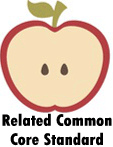How to Make Sure Your Answer has Everything a Question Asks?
Formulating perfect answers can sometimes be very tricky, more than correct grammar and spellings, the content of your answer matters a lot. Therefore, you need to put equal focus on grammar and content. Mastering the art of writing immaculate answers is time-consuming, but not impossible. It requires practice and hard work to develop the ability to form excellent answers. Below is the list of guidelines to give exceptional answers.
Read the Question Carefully
Read the question at least three times to understand the requirements. Identify the keywords and important phrases in the question. These words and phrases basically tell what to write. Most common keywords include explain, describe, compare, define, etc. Each word has different requirements for answers. For example, the content for questions with the word 'explain' will not be the same as the questions that ask you to 'analyze' a situation. In addition to this, ask your teacher for guidance if you fail to understand any part of the question. You can write the correct details only when you fully understand the question.
Create a Mind Map
Don't rush into writing. Take at least five minutes to create a mind map with all possible examples, facts and figures, and other information in small points. Doing so won't let you miss out on any important information. Compare points in the answer with the ones on the mind map once you finish writing. Add the ones you find missing. However, make sure to add them strategically if it's a hand-written assignment to keep the flow of words uninterrupted and the answer sheet clean.
Re-read Your Answer
Never submit your assignment without double checking it. There are multiple minor errors if not major. These mistakes are usually made unconsciously while writing, therefore, you fail to identify them. Read each and every line to make sure everything makes the right sense. In addition to this, make sure all the points are relevant to the topic. Moreover, look out for spelling and grammatical errors.
What Is Task-Based Writing?
Task-based learning and teaching (TBLT) is a technique for developing language competence in second language learners. It is an effective technique for establishing communicative competence and for developing good writing skills in students. In task-based learning, a specific task is given to the students to establish their language abilities. This task can be any activity in which the teachers provide some information to the students and the students have to reach a conclusion by going through a thought process. Through these tasks, the learners use and produce the targeted language and build their writing skills.
According to the researchers, there are seven types of tasks that can improve learners writing skills. These tasks are listed below:
Listing
In this type of task, the students have to brainstorm about an idea first and then they have to make a list of things that need to be done or written e.g. things to do, features, qualities, etc.
Matching
In this task, the students have to match what they have heard from what is written. They listen to something and match it with the written word, then they listen and perform. This activity also involves using written phrases in the picture description and matching direction to the maps.
Ordering
These type of activities involve students in sequencing tasks. The students have to give an ascending or a descending order to items that are in the written form.
Problem Solving
In this task, students are given a case study, real-life situation or an incomplete story and then they are asked to give an end to that story, to generate a solution for the problem, to write a suggestion, etc.
Comparing
This task requires finding differences and similarities between two things.
Personal Experiences
In this task, the students are asked to write their personal experiences regarding anything in the targeted language.
Creative Tasks
In this task, the students are given projects by their teachers and they have to work on them through conducting a research,

